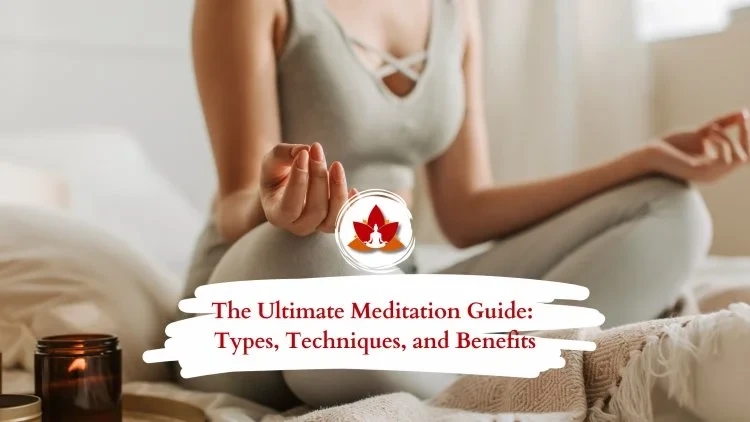Meditation is more than just sitting quietly with your eyes closed; it is a conscious practice that helps you achieve mental clarity, emotional balance, and inner peace. A meditation technique is essentially a structured method or approach used to calm the mind, train awareness, and cultivate mindfulness. Each technique offers unique benefits, depending on your personal goals—whether it’s stress reduction, self-awareness, or spiritual growth.
What Is a Meditation Technique?
A meditation technique refers to a specific practice designed to focus your attention and quiet the endless stream of thoughts in your mind. The techniques can range from simple breathing exercises to advanced visualization and mantra repetition. The purpose of every meditation technique is to bring the mind to a state of stillness and awareness.
Some techniques emphasize mindfulness of the present moment, while others focus on compassion, loving-kindness, or spiritual awakening. Regardless of which you choose, consistency is key—daily practice deepens your connection with yourself and enhances your overall well-being.
Types of Meditation Techniques
There are various meditation techniques practiced around the world, each offering distinct methods and outcomes. Understanding the main types can help you select the one that suits your personality and goals.
1. Mindfulness Meditation
Mindfulness meditation is one of the most popular meditation techniques today. It involves observing your thoughts, feelings, and sensations without judgment. You simply pay attention to your breath, the rhythm of your body, and the flow of your mind. This technique helps increase self-awareness and reduce anxiety.
2. Mantra Meditation
In mantra meditation, a specific sound or phrase (such as Om) is repeated to help focus the mind. This meditation technique is often used in Hindu and Buddhist traditions to channel energy and achieve deeper concentration. The vibration of the mantra aligns your energy centers and promotes inner peace.
3. Guided Visualization Meditation
This meditation technique uses guided imagery to evoke a sense of calm. Practitioners visualize peaceful scenes—like a forest, ocean, or mountain—guided by a teacher or recording. Visualization can reduce stress and enhance positive emotions, making it a great tool for beginners.
4. Loving-Kindness Meditation (Metta)
Also known as Metta Bhavana, this meditation technique encourages compassion toward oneself and others. It involves silently repeating phrases like “May I be happy, may I be healthy, may I live with ease.” Over time, it opens the heart and nurtures empathy and forgiveness.
5. Transcendental Meditation
Transcendental Meditation (TM) is a structured meditation technique where a specific mantra is silently repeated for about 15–20 minutes twice a day. It allows the practitioner to transcend ordinary thought and enter a state of restful alertness. TM has been scientifically shown to reduce blood pressure and enhance creativity.
Benefits of Practicing a Meditation Technique
The consistent use of a meditation technique offers numerous mental, emotional, and physical benefits. Regular practice strengthens your focus, reduces negative thinking, and improves overall happiness.
Mental Clarity and Focus
Meditation trains the brain to remain calm under stress. Using a meditation technique helps improve concentration, memory, and problem-solving ability.
Emotional Balance
By observing emotions without reacting, you develop resilience. This meditation technique can transform anger and anxiety into understanding and peace.
Physical Well-being
Research shows that certain meditation techniques lower heart rate, reduce cortisol levels, and boost immunity. The relaxation response triggered by meditation helps the body heal naturally.
How to Choose the Right Meditation Technique?
Choosing the right meditation technique depends on your lifestyle and goals. Beginners may prefer mindfulness or guided meditation, while advanced practitioners might explore mantra or transcendental techniques.
Tips for Beginners
- Start small—just 5–10 minutes daily.
- Choose a quiet place free of distractions.
- Use guided apps or videos if needed.
- Stay patient—results deepen with consistency.
Over time, your preferred meditation technique will feel natural, and you’ll experience profound changes in your awareness and emotional health.
The Science Behind Meditation Techniques
Modern neuroscience confirms what ancient traditions have long known—the right meditation technique can rewire the brain. Studies show that regular meditation increases gray matter in areas linked to memory and emotional regulation. It also lowers activity in the amygdala, the brain’s fear center, reducing stress responses.
This proves that meditation is not just a spiritual ritual but also a powerful mental training tool backed by science.
Integrating Meditation Techniques into Daily Life
You don’t need to retreat to a monastery to benefit from meditation. Simple meditation techniques can be woven into your everyday routine. Practice mindful breathing while commuting, observe your thoughts before sleep, or repeat a mantra during stressful moments. Even five minutes of awareness can shift your energy and perspective.
Conclusion: The Transformative Power of Meditation Technique
A consistent meditation technique practice can transform your life from the inside out. Whether you seek peace, clarity, or connection, meditation provides the foundation for all. By exploring different techniques and finding the one that resonates with you, you open the door to lasting calm and spiritual growth.
Remember: meditation is not about escaping reality but about fully embracing it with presence and love.


